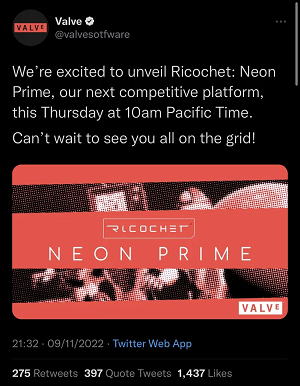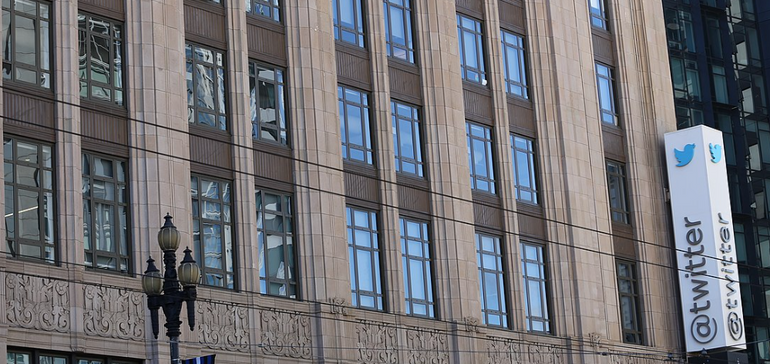It’s tough to write about all the changes at Twitter at the moment.
Not because of some sentimental attachment to what the platform was, or frustration at what Elon Musk may or may not do to break it (which he could well be very close to doing).
No, it’s hard to write about Twitter because as soon as you write that they’ve changed something, they change it back, or add something new, or Elon sends a tweet to ‘kill it’ before it even goes anywhere.
Just this week, for example:
- Twitter added a new gray checkmark for ‘Official’ accounts, that would be displayed along with the blue verification tick for selected profiles. Twitter announced it, then Elon said that they’d cancel it, then Twitter said that it would go ahead. Then, a few hours later, Twitter officially buried it, at least for the time being.
- Twitter launched its new $8 Twitter Blue with verification program in some regions – though only for accounts created before November 9th. The cut-off date is designed to stop users from registering newly created accounts designed purely to impersonate notable users, but that did not stop many users from doing exactly that on the first day of the launch.
- Twitter sent out an email to the holders of dormant Twitter accounts letting them know that they would lose their handles if they didn’t log in by December 11th. Then Twitter announced that it would be revising that approach in order to establish a system for memorializing accounts.
- Twitter said that currently verified profiles would need to also pay for Twitter’s new $8 blue package to keep their blue tick. Then they wouldn’t, then they would, now they will, though with some exceptions.
- As I was writing this post, two more senior execs reportedly left the company, the two that moderated a meeting this week between Elon and top ad partners, to assure them that everything’s fine.
As you can imagine, it’s difficult to provide an accurate account of what’s going on when it changes as soon as you’ve hit publish – which, really, is pretty emblematic of the Musk takeover at the app so far. Fast-paced chaos, which seems to be hurtling inevitably towards a crash of some sort.
Or maybe Musk is just too visionary for anyone else to see it.
Either way, Elon’s certainly bringing attention to the app, and with usage numbers rising, that could be good. Maybe.
But then again…
Musk’s $8 verification plan is now slowly being rolled out, and that’s led to a raft of imposter accounts sporting shiny new verified checkmarks, sparking varying degrees of confusion.
- A fake LeBron James account declared that the NBA star was seeking a trade away from the LA Lakers, which gained big traction before Twitter removed it.
- A fake Nintendo account displayed an image of Mario flipping the bird
- False accounts under the names of George W. Bush and Tony Blair made jokes about the Iraq war
- Fake video game company accounts announced games that are not in development

As you can see in this example, many of these accounts, at a first glance, look legit, with the blue checkmark, which users have come to recognize as a sign of trust in the app, giving them a degree of authority.
Twitter says that it’s ‘aggressively’ removing these imposter profiles (clicking harder on the delete button), but with half of its staff gone, this still seems like a significant vector for misinformation. And one that could have been 100% avoided – but that’s not, for better or worse, how Elon operates.
As Elon himself has said:
Please note that Twitter will do lots of dumb things in coming months.
We will keep what works & change what doesn’t.
— Elon Musk (@elonmusk) November 9, 2022
Those ‘dumb things’ could also extend to violating its FTC requirements, with reports that the company’s information security chief, chief privacy officer, and chief compliance officer all resigned from the app last night.
The resignations reportedly came about as a result of Elon’s increasing willingness to push the boundaries of the law on what they can get away with, in terms of reporting requirements and disclosures.
As reported by The Verge, one Twitter staffer wrote:
“Elon has shown that his only priority with Twitter users is how to monetize them. I do not believe he cares about the human rights activists. the dissidents, our users in un-monetizable regions, and all the other users who have made Twitter the global town square you have all spent so long building, and we all love.”
That could put Twitter on increasingly shaky ground, and given the examples of impersonation we’ve already seen from Musk’s $8 verification plan, it’s very likely that this will lead to even more scam activity and fraud in the app.
But in line with the above statement, Musk sees the risk to Twitter as minimal:
Great question. Twitter will suspend the account attempting impersonation and keep the money!
So if scammers want to do this a million times, that’s just a whole bunch of free money. pic.twitter.com/QUrxqb59I0
— Elon Musk (@elonmusk) November 5, 2022
So despite this being a risk to users, who may well get duped by such scams, Musk’s concern here is that Twitter will still get the money – though as one user who exploited the new blue checkmark option pointed out, if an account is canceled within a month, some credit card providers will refund such charges anyway, reducing the financial risk that Musk believes will act as a deterrent.
There’s also this:
The people who incited violence and bomb threats against children’s hospitals have now all been verified under Twitter Blue. Advertisers should not support the vile hate being legitimized and amplified on this platform. pic.twitter.com/mKbkIufWFJ
— Alejandra Caraballo (@Esqueer_) November 9, 2022
Musk’s half-baked verification-for-a-fee program – which is not actually verifying anything – is already causing confusion, and essentially empowering some of the worst elements in the app.
And as noted by Katie Notopoulos of BuzzFeed News, his vision of this new verification scheme creating a better system for eradicating hate speech, because people are less likely to risk their account when they’re paying $8 per month for it, won’t work either.
But Elon’s going to try, he’s going to push ahead with ‘dumb things’, and fail a lot along the way. Which he has the right to do, given he paid $44 billion for the app.
But the concern within that is the users who’ll get hurt along the way, as Musk risks their safety for his own gain.
And now, with virtually all of Twitter’s former top leaders gone, the challenge of reforming the app into something new seems to have risen substantially.



